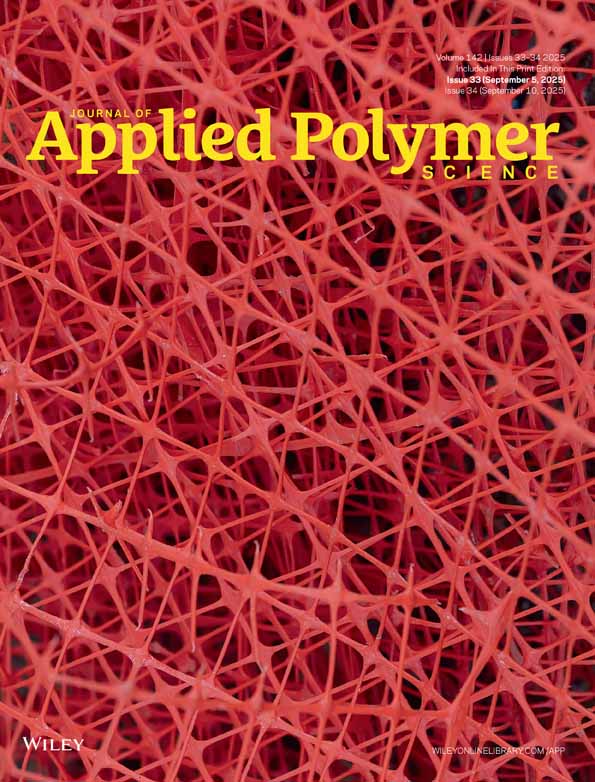Influence of chemical compositions on the properties of random and multiblock sulfonated poly(arylene ether sulfone)-based proton-exchange membranes
Abstract
The influence of chemical compositions on the properties of sulfonated poly(arylene ether sulfone)-based proton-exchange membranes was studied. First, we synthesized three different series of random SPAES copolymers using three kinds of hydrophobic monomers, including 4,4′-dihydroxyldiphenylether, 2,6-dihydroxynaphthalene (DHN), and 4,4′-hexafluoroisopropylidenediphenol (6F-BPA) to investigate effects of hydrophobic components on the properties of SPAES membranes as proton-exchange membranes. Random SPAES copolymers with 6F-BPA showed the highest proton conductivity while random SPAES copolymers with DHN displayed the lowest methanol permeability among the three random copolymers. Subsequently, we synthesized multiblock SPAES using the DHN as a hydrophobic monomer and studied the effect of the length of hydrophilic segments in the multiblock SPAES copolymers on membrane performance. The results indicated that longer hydrophilic segments in the copolymers led to higher water uptake, proton conductivity, and proton/methanol selectivity of membranes even at low humidity. In addition, the morphology studies (AFM and SAXS measurements) of membranes suggested that multiblock copolymers with long hydrophilic segments resulted in developed phase separation in membranes, and ionic clusters formed more easily, thus improving the membrane performance. Therefore, both the kinds of hydrophobic monomers and the length of hydrophilic segments in SPAES copolymers would influence the membranes performance as proton-exchange membranes. © 2009 Wiley Periodicals, Inc. J Appl Polym Sci, 2010




